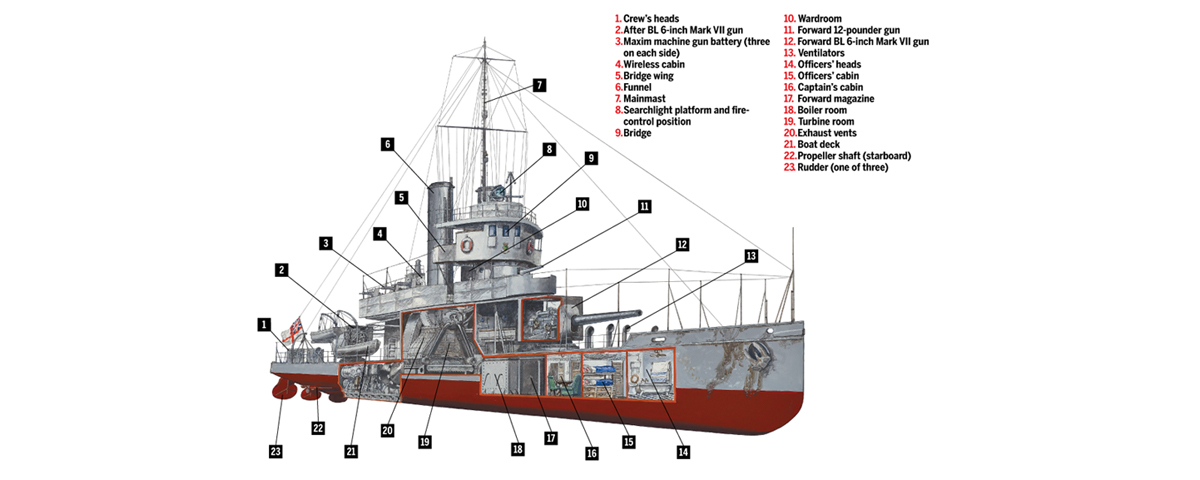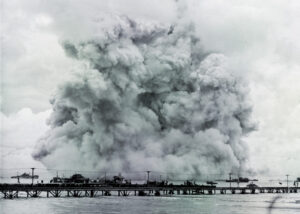Length: 237 feet 6 inches
Beam: 36 feet 1 inch
Draft: 4 feet
Displacement: 645 tons
Power: Two Yarrow water-tube boilers
Propulsion: Two expansion turbines driving in-turning propeller shafts
Speed: 14 knots
Armament: Two BL 6-inch Mark VII guns, two 12-pounders, six Maxim machine guns
Complement: 55
Throughout the 19th century shallow-draft gunboats helped Western nations project imperial power deep into subject territories via their rivers. Yet in December 1904 British First Sea Lord Admiral Sir John Fisher ordered most of the Royal Navy’s gunboats scrapped, claiming that strategically placed cruiser squadrons rendered them obsolete. World War I soon proved Fisher wrong, as the need to secure such maritime thoroughfares as Lake Tanganyika and the Danube, Tigris and Euphrates rivers revived the need for well-armed, shallow-draft vessels.
Standing out among the British gunboats were the dozen Insect-class vessels (Aphis, Bee, Cicala, Cockchafer, Cricket, Glowworm, Gnat, Ladybird, Mantis, Moth, Scarab and Tarantula) built between February 1915 and March 1916. Half of them were still serving in World War II. HMS Moth led a particularly varied career. Laid down in March 1915 and launched that October, it was designated for service in China, but soon after its commissioning on Jan. 5, 1916, it was sent to the Persian Gulf to join the Tigris River flotilla on the Mesopotamian campaign. Helmed by Lt. Cmdr. Charles H.A. Cartwright, it helped the British retake Kut on Feb. 23, 1917, followed by Baghdad on March 11. Reassigned to support the North Russia Intervention against the Bolsheviks, Moth arrived at Archangel in June 1919 and operated along the Dvina River until British forces withdrew at year’s end. By 1920 the gunboat was in China, where it served until Dec. 12, 1941, when scuttled off Hong Kong. But this Moth had an afterlife. The Japanese raised the gunboat, renamed it Suma and used it against Chinese insurgents on the Yangtze River. Suma survived numerous attacks by Allied aircraft, but on March 19, 1945, it struck a naval mine off Anqing and sank with the loss of eight crewmen. MH





